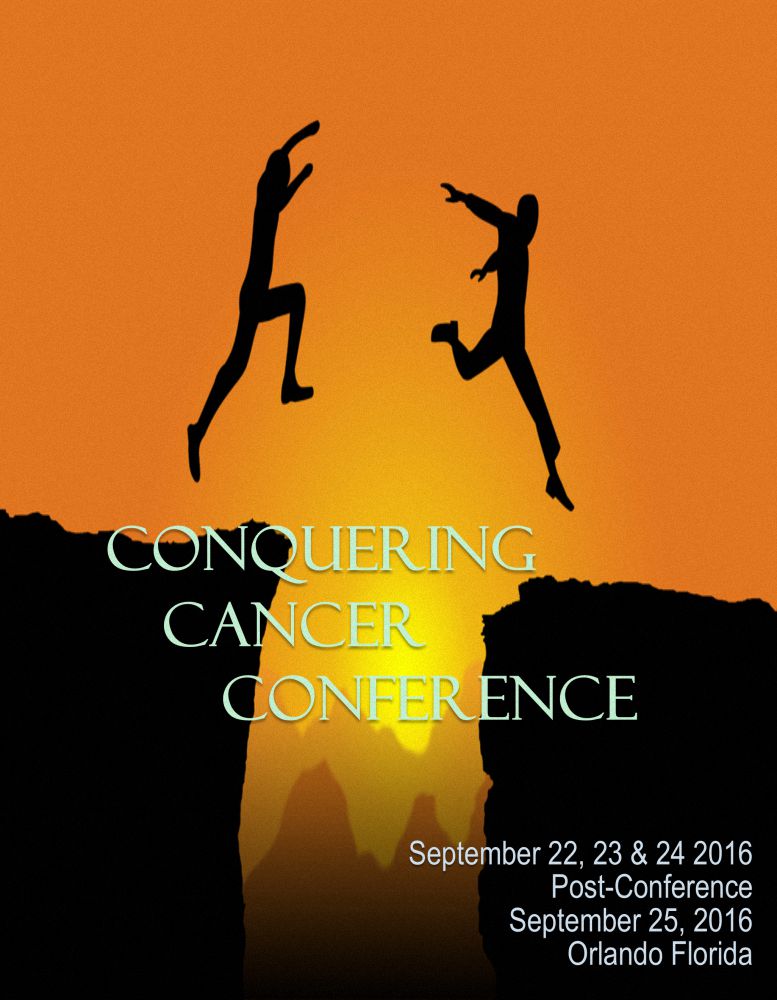 |
Conquering Cancer Conference
SPEAKERS & TOPICS |
| |
 |
Title: The Ideal Diet for Cancer: Mitochondrial Metabolic Therapy
Objectives:
- Understand how to use food as a clean fuel that limits reactive oxygen species that causes the mitochondrial damage that contributes to cancer
- How to use the best online nutrient tracker to implement the diet recommendations
- Essential blood tests that every cancer patient needs to monitor
- The ideal macronutrient ratios and the biochemical reasons for their recommendations.
|
| Synopsis:Review the current molecular biological science of why mitochondrial optimization will prevent and help reverse the metabolic dysfunction that contributes to nearly every cancer. Specific macronutrient recommendations, daily home monitoring strategies for patients, and online tracking tools will be reviewed. |
| |
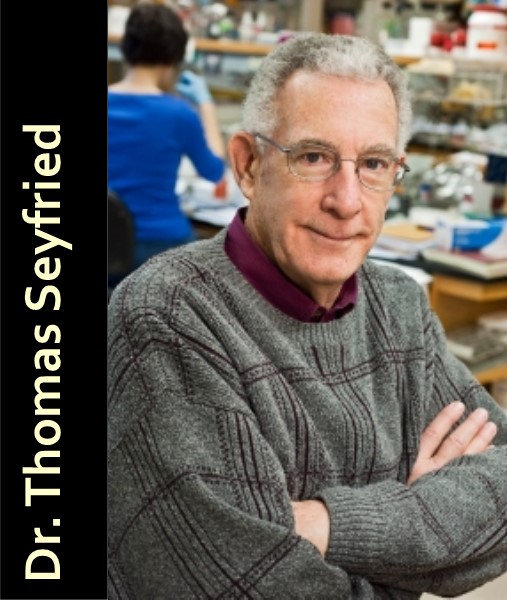 |
Title: Cancer as a Mitochondrial Metabolic Disease: Implications for Management and Prevention
Objectives:
- Recognize that cancer is primarily a mitochondrial metabolic disease.
- Recognize that cancer can be treated and prevented with non-toxic metabolic therapies that target and kill tumor cells while enhancing the energy efficiency of mitochondria in normal cells.
- Personalization of metabolic therapy, as a broad-based cancer treatment strategy, will require fine-tuning to match an individual’s unique physiology.
|
| Synopsis: Emerging evidence indicates that cancer is primarily a mitochondrial metabolic disease involving disturbances in energy production through respiration and fermentation. The genomic instability observed in tumor cells and all other recognized hallmarks of cancer are considered downstream epiphenomena of the initial disturbance of cellular energy metabolism. The disturbances in tumor cell energy metabolism can be linked to abnormalities in the structure and function of the mitochondria. Cancer growth and progression can be managed following a whole-body transition from fermentable metabolites, primarily glucose and glutamine, to respiratory metabolites, primarily ketone bodies (b-OHB). Calorie restricted ketogenic diets can lower circulating glucose and elevate-OHB. The metabolic transition from glucose to ketone bodies will reduce tumor angiogenesis and inflammation while enhancing tumor cell apoptosis. Malignant brain cancer in preclinical models and humans will be used to illustrate general concepts. New information will be presented on the Glucose/Ketone Index and the Press-Pulse Paradigm for non-toxic cancer management and prevention. |
| |
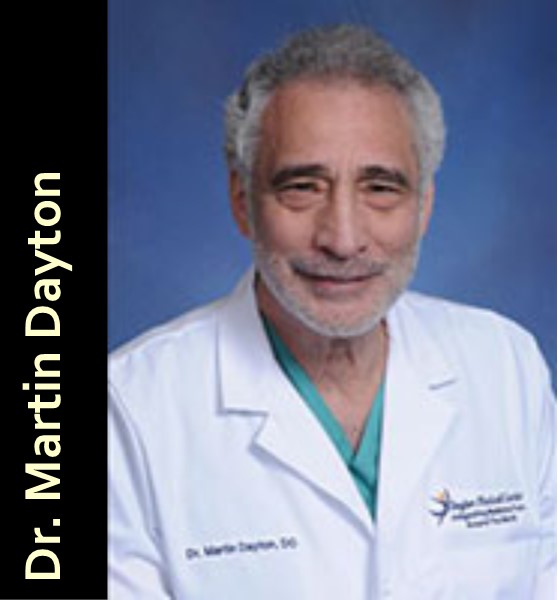 |
Title: Integrative Medical Approach to Watchful Waiting for Prostate Cancer
Objectives:
- Familiarize the audience with localized prostate confined cancer;
- Learn a nutritional/holistic watchful waiting approach to localized prostate cancer;
- Learn a general integrative approach to addressing cancer through the eyes of a patient with prostate confined cancer.
|
| Synopsis: The presentation involves a watchful waiting approach to address cancer confined to the prostate gland from both integrative medical practitioner and patient perspectives. It covers a relatively comprehensive holistic approach using various diagnostics and therapeutics. The presentation is full of pearls of knowledge applicable to addressing prostate cancer, as well as cancer in general. The presentation is created in an unique manner to entertain and while fostering assimilation of knowledge |
| |
 |
Title: Cancer: How It Works and How You Win
Objectives:
- Provide the audience a basic understanding of the biological mechanism behind cancer
- Understand how conventional cancer treatments have limited potential and have to utilize integrative medicine with conventional treatments, and how there are better treatment options available
- Educate the audience about the latest and greatest integrative oncology treatments
|
| Synopsis: “Cancer: How It Works and How You Win” is a presentation that is designed to educate physicians and the general public about the dangers of cancer and what we can do to overcome it. The presentation begins by explaining the biological mechanism behind cancer cell growth and then discusses various treatment options that are available to patients. The purpose of this presentation is to show the benefits of treating cancer naturally and the positive results our facility has seen with our patients. |
| |
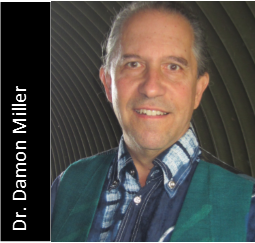 |
Title: The Role of Chinese Herbal Medicine in Cancer Treatment Protocols
Objectives:
- Participants will understand the way that herbs have been used in classical Chinese medicine in the treatment of cancer.
- Participants will understand the ways that Chinese herbal medicines can be used in an Integrative Medical approach to the treatment of cancer.
- Participants will understand the ways in which Chinese herbs have provided raw materials for the development of some of the Western pharmaceutical drugs used in the treatment of cancer.
|
| Synopsis: Oriental medicine has a long and well documented history, including some very successful strategies for dealing with cancer. Some of the best cancer treatment centers in China and elsewhere in Asia integrate the traditional medicine and herbs with newer Western pharmaceuticals with good results. We will discuss how the herbal medicines are used as part of the cancer treatment as well as how the herbs and practice of Oriental medicine serve to support the health and well-being of the patients during their treatment. |
| |
 |
Title: Overcoming Cancer
Objectives:
- To describe many of the causes of cancer ignored by allopathic medicine
- To teach integrative ways of eliminating many of the causes of cancer
- To present case examples that exemplify the reversibility of advanced cancer
|
| Synopsis: The CANCER diagnosis provokes profound fear in most patients because they believe they will first suffer from the standard treatment (surgery, radiation and chemotherapy), then die prematurely. Unfortunately, most oncologists don’t even talk to their patients about the many cancer causes (other than cigarette-smoking for lung cancer and papilloma virus for cervical cancer) and the importance of identifying & eliminating those causes. In many cases, this is based on the doctor’s limited knowledge & experience. Often, if the underlying causes of cancer are carefully sought & systematically addressed, the patient with cancer either markedly improves or, in some cases, is completely healed. Dr. Cowden will present several case reports to demonstrate the principles of using an integrative medical approach to help patients with cancer. |
| |
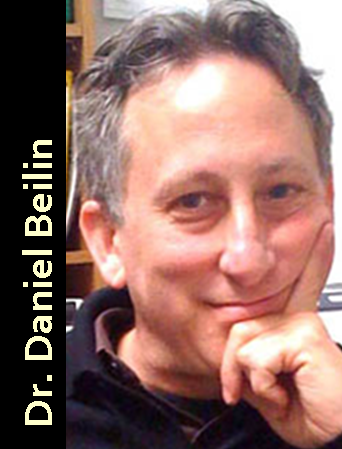 |
Title: Identifying and Eradicating Focal and Toxic Processes in Cancer by Regulation Thermometry
Objectives:
- 1. To show how infections trigger cancers
- 2. To show how the Autonomic Nervous System can spread a cancer
- 3. To Show how thermography mathematically monitors patient treatment progress
|
| Synopsis: The role of the Autonomic System in cancer has been proven by several recent studies, and provides specific neurological information regarding metastatic initiation and aggression. Regulation Thermometry can monitor both sympathetic and parasympathetic systems connected with specific organ health in order to surveil the terrain of most cancers. This lecture will give clinical case studies and show provings for the method. |
| |
 |
Title: Examining Breast Cancer from a Recall Healing Perspective: Stories of Transformation and Hope
Objectives:
- Introduce Recall Healing for Breast Cancer
- Highlight current research related to various modalities and breast cancer
- Highlight case studies utilizing Recall Healing for breast cancer
|
| Synopsis: Recall Healing serves to address underlying emotional roots of cancer. It teaches individuals tools to navigate and to release hidden or trapped emotions. This presentation will introduce principles of Recall Healing and its specific meaning and use for breast cancer. Current literature highlighting a variety of modalities used in treating breast cancer will be discussed. A collection of data is beginning to emerge in utilizing Recall Healing for various cancers; a number of case studies demonstrating the use of Recall Healing for breast cancer will be included in this presentation. |
| |
 |
Title: The Roadmap to True Early Cancer Detection
Objectives:
- Participants will learn that standard tests including mammograms, PSAs and biopsies are not early detection.
- Participants will learn about new, more sensitive tests that are available.
- True early detection is key to successful use of complementary therapies which allow the body to heal without exposure to toxic therapies.
|
| Synopsis: It pays to intervene with cancer as early as possible. Seven to ten years of valuable time is wasted while waiting for a physical manifestation of a lump or bump. Cancer testing has come a long way in the last couple of decades. We can now detect cancer with as few as 2 million cells compared to the 4.5 trillion cells required for a positive mammogram. Patients often do not know about these newer tests. With true early detection, patients and their physicians have time to intervene early, to make epigenetic changes that can improve their outcome and perhaps save their life. With about half of all Americans expected to get a cancer diagnosis in their lifetime, it is time to make widespread use of better testing modalities |
| |
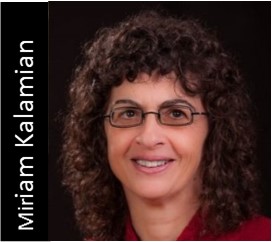 |
Title: Implementation of the Ketogenic Diet for Cancer
Objectives:
- Understand how food choices and macronutrient distribution alter genetic expression which in turn impacts energy metabolism and cellular signaling pathways associated with optimal cellular health
- Know what demographic and health history information must be collected and assessed as part of the process of developing a personalized ketogenic plan
- Assemble a practitioner’s toolkit that includes resources and strategies to motivate commitment, support ongoing compliance, ameliorate treatment side effects and encourage personal accountability for those who seek help in implementing the diet as a cancer management strategy
|
| Synopsis: The ketogenic diet is rapidly gaining broader acceptance as a safe and effective adjuvant in cancer care, mostly driven by patient demands for less toxic and more holistic therapies. As the momentum builds, it is absolutely essential to also build the infrastructure needed to support safe and effective use of this unique diet therapy. Currently, few practitioners possess the skills and knowledge needed to adapt the diet to meet the complex needs of individuals. This presentation will answer questions about food choices, macronutrient calculations, meal timing and nutritional supplements. It will address compliance issues and personal accountability. It will also look at the deeper social, emotional and cultural issues surrounding a diet that is viewed by many as “restrictive” and begin to move that conversation towards an understanding that low carbohydrate living can support optimal cellular health throughout the lifespan. |
| |
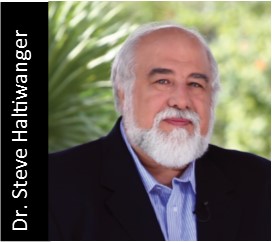 |
Title: How the electronic properties of cancer cells are affected by PEMF devices and a medical food oxaloacetate
Objectives:
- To learn about the electronic properties of molecules, cells & tissues and how PEMF therapy can improve physiological functions & work in conjunction with nutrient therapies in the treatment of cancer & other diseases
- Participants will gain an understanding of why a focus on the electronic properties of cell membrane transport mechanisms & cellular energy production can improve the entry of nutrients into cells to activate metabolic processes
- To understand the biochemical pathways of oxaloacetate & learn how this medical food oxaloacetate may help in cancer & CNS conditions.
|
| Synopsis: Because the body's cells and tissues possess an intrinsic electric nature that permits the transmission of signals for information and control of biological processes; properly designed electromagnetic devices are able to change and control biochemical processes at a fundamental level. Biological effects of exposure to nsPEMFs can alter: cell membrane capacitance, mitochondrial function (ATP production), protein semiconduction, bioelectronic currents, antioxidant levels of tissues, increase the expression and activity of growth factors, reduce inflammation, improve wound healing, increase cellular nutrient uptake and kill cancer cells. Orphan drug legislation allows for “medical foods” for the treatment of rare conditions. Oxaloacetate, an FDA designated medical food, has shown great promise for treating brain cancer. Animal tests with oxaloacetate show a 237% increase in survival in brain cancer models, and initial human tests show that 88% of the patients with MRI before/after data either shrank or stopped the growth of their tumor. |
| |
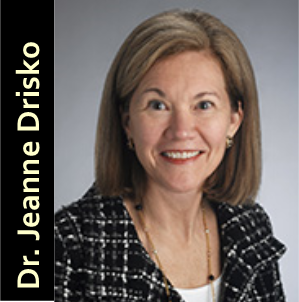 |
Title: Ketogenic Diet and IV Vitamin C in Cancer Care
Objectives:
- Discuss the preliminary research findings using parenteral vitamin C with the ketogenic diet
- Describe the early clinical research findings using intravenous vitamin C in cancer treatment
- Name potential pitfalls and concerns when infusing vitamin C in cancer patients
|
| Synopsis: Recent in vitro and animal evidence indicates that pharmacologic doses of vitamin C may have selective cancer killing properties by action as a prodrug to generate hydrogen peroxide selectively in extracellular fluid. Our group has elucidated the disproportionate pharmacokinetic properties between oral and intravenous (pharmacological) vitamin C administration in normal human subjects. This striking concentration difference seems to be dependent on tightly-regulated mechanisms that maintain serum ascorbate concentrations when ingested orally but not when infused intravenously. Intravenous infusion bypassing tight control appears to be critical for its role in oncology and evidence from our group will be presented. In addition, preliminary evidence for ketogenic diet coupled with pharmacologic vitamin C will be presented. The presentation will also include clinical experience from KU Integrative Medicine Clinic. |
| |
|
|
Title: Demystifying and simplifying the molecular biology of cancer
Objectives:
- Identify three molecular signaling pathways relevant in cancers
- Identify anti-cancer molecular effect of two molecularly-targeted natural products
- Identify anti-cancer molecular effect of two re-purposed off-label pharmaceuticals
|
| Synopsis: Molecular biology of cancer is a big complex subject which remains poorly understood by many physicians and other healthcare professionals. Only recently has molecular biology become widely taught in medical training. Many doctors haven’t yet had adequate training in the robust evidence-base showing significant molecular anti-cancer effects of natural products and re-purposed off-label pharmaceuticals. This molecularly-targeted evidence-base is readily available and supports the safe and beneficial administration of anti-cancer natural products and re-purposed off-label pharmaceuticals - in addition to – not instead of – conventional oncology treatments (including chemotherapy and radiation therapy). This knowledge is particularly relevant for integrative medicine physicians who treat patients with cancer who are seeking treatment to complement their conventional oncology care. This lecture is designed to give clinicians a relevant, concise and practical overview of the molecular biology of cancer – providing an easy-to-apply intellectual framework to learn and explore relevant molecular biology in treatment of their patients.
|
| |
 |
Title: Novel Mechanisms of Bacterial Regulation on Mitochondrial Signaling and Apoptosis
Objectives:
- Explore the relationship of the Gut Microbiome and Carcinogenesis
- Discussion of the discovery of bacteria-derived redox signaling
- Establish a basic science and clinical framework to improve interspecies communication between bacteria, mitochondria, and human cells to maximize the body’s inherent mechanisms of cancer surveillance and recovery
|
| Synopsis: Over the last 10 years there has been an explosion of basic science data that has revealed a link between the intestinal microbiome and systemic disease in the human host. The lack of some species, or the presence of other bacterial species correlates with the occurrence of different types of cancer. This correlation has radically changed the landscape of cancer research, and broadened the potential adjuvant therapies and interventions to prevent and manage cancer in the future. This lecture reveals the 2012 discovery of a redox signaling system produced by the bacterial microbiome. The effects of this redox system on mitochondria in healthy and cancerous cells reveals a unifying mechanism by which our new and traditional concepts of cancer can be understood. |
| |
 |
Title: Strategies for Integrating Supplements, Botanicals, and IV Therapies for the Patient Undergoing & Recovering from Conventional Oncology Treatment
Objectives:
- How to Approach the Oncological Patient Nutritionally
- How to Safely Interact with Chemotherapy, Radiation Therapy, and Surgery utilizing natural therapies
- How to utilize IV Therapies alongside conventional oncology treatments
|
Synopsis: As of today, cancer will impact 1 in 5 women and 1 in 4 men in their lifetime, and this number continues to rise. It is critical that holistic health practitioners understand the medications and other methods used to treat cancer, and the long-term consequences of cancer treatments.
This presentation will review the research literature that is available so that attendees may be able to interact with chemotherapy, radiation therapy, and surgery without causing potential harm or reduce efficacy. Natural and nutritional therapies will be reviewed for reducing side effects and improving outcomes. Strict contraindications will also be reviewed. |
| |
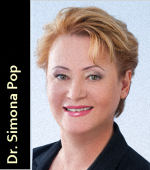 |
Title: Dentistry & Cancer Connection: Myth or Reality?
Objectives:
- Relationship between teeth extracted areas and the emergence of various diseases
- Root canal filling develops various diseases
- Dental material and cancer
|
| Synopsis: Recently, it has been recognized that oral infection, especially periodontitis, may affect the course and pathogenesis of a number of systemic diseases, such as cardiovascular disease, bacterial pneumonia, diabetes mellitus, and low birth weight. The purpose of this review is to evaluate the current status of oral infections, especially root canal fillings according to periodontitis, as a causal factor for systemic diseases. There are three mechanisms or pathways linking oral infections to secondary systemic effects: metastatic spread of infection from the oral cavity as a result of transient bacteremia, metastatic injury from the effects of circulating oral microbial toxins, and metastatic inflammation caused by immunological injury induced by oral microorganisms. Not only periodontitis as a major oral infection may affect the host's susceptibility to systemic disease but also absence of teeth in the mouth after various oral infections. |
| |
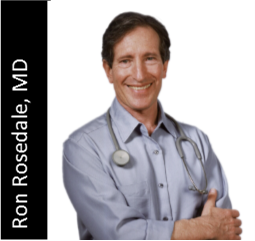 |
Title: The Intimate Connection Between Cancer, Aging, Protein, and TOR
Objectives:
- What is the mTOR pathway and its relation to aging and cancer?
- What are the major nutrient pathways that influence it?
- What does this tell us about what to eat, or not?
|
| Synopsis: The roots of aging and cancer are linked. One cannot reduce one without the other. This perhaps is most illustrated by the mTOR pathway, and that is intimately connected to diet. I will talk about the dietary connection, especially protein, to that most critical pathway |
| |
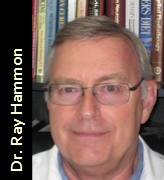 |
Title: Cancer Free or Just Tumor Free; Your Life May Well Depend On The Difference
Objectives:
- The real difference between cancer free and tumor free and how to tell the difference.
- Develop a targeted personalized patient program (both natural and chemo) based on an extensive, ex-vivo, high tech analysis of the patients own tumor stem cells.
- Short and long term management using this very unique and thorough process.
|
| Synopsis: Using updated molecular biology science, we will explore some very exciting strategies that have been developed for personalized cancer care. The process starts with a 15-25 ml blood sample. A negative extraction for the circulating cancer stem cells or TIC (Tumor Initiating Cells) is performed. Initial testing is for positive phenotype, genetic, epigenetic markers. The extracted patients TIC’s are expanded up to a trillion identical cells in just 24-36 hours. RGCC then tests these identical TIC’s on a double platform, triple testing of 53 chemotherapeutic drugs and 47 natural substances for apoptosis induction. Also, testing 75 common tumor related genes and 48 biological modifiers. The new modern RGCC lab is 50,000 sq. ft., and approved for drug development with a class A pharmaceutical area. RGCC has ISO Accreditation Certificate number 860. RGCC, Ltd is headquartered in Switzerland and RGCC Lab is located in the industrial area of Florina, Greece. |
| |
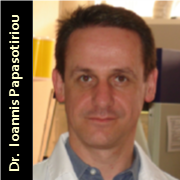 |
Title: CTCs and CSCs as the Circulating Cancer Cell Subsets that Promote Cancer Progression
Objectives:
- Understanding about Cancer physiology and the impact in clinical practice
- What is the role of heterogeneity in cancer what is the influence in disease progression and it treatment strategies
- What technologies are available to analyze these subset of cancer cells and what information we may harvest that influence the clinical decision.
|
| Synopsis: The primary tumor released disseminated tumor cells in a form of CTC which include the subset of CSCs. These cells are seeding the distant organ in a very early stage and form colonies which in later stage they are going to develop a macrometastases. The understanding of the function of these cells and the ability to analyze them is relevant with the therapeutic strategies that are going to applied on patients. The technological assays that are available today allow us to point them out, to analyze them and collect all the essential information and data that will guide us to a more personalized approach therapeutic protocols for each individual. |
| |
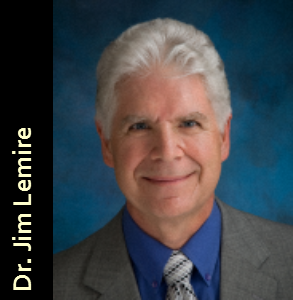 |
Title: Endometrial Carcinoma Clinical Case Study
Objectives:
- Initial evaluation of the patient with cancer
- Interpretation of studies
- Developing an integrated treatment plan
|
| Synopsis: This is the clinical case study of a 60+ year-old white woman who developed endometrial carcinoma. We did her initial evaluation and made recommendations for treatment which included alternative therapy after the initial surgery. We also discussed the Greek study and how it was used. We developed a plan of care using an integrative therapy program including: IVs, diet, exercise, nutrition and emotional support. We now report how this approach affected her outcome. |
| |
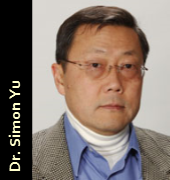 |
Title: Accidental Cure for Cancer: Think Unconventional, Asymmetric Metabolic Parasites
Objectives:
- Introduce the concept of Energy Medicine: Physics, bio-physics and meta-physics.
- New way of detecting parasites and dental problems by using current technology based on acupuncture meridians and its conductance assessment.
- Understanding the evolution of biology and cancer metabolism.
|
| Synopsis: Cancer metabolism mimics very like metabolic parasites from the perspective of evolution of biology. Parasites are a leading cause of morbidity and mortality in global scale with 4.5 billion people infected by all helminthes. Global climate warming and human migrations/vacations accelerated the translocation of parasites. Parasites are associated with chronic fatigue, fibromyalgia, migraine headache, Irritable Bowel Syndrome, multiple sclerosis, autism and cancer, etc. This lecture will cover why parasites are often overlooked environmental threats ignored by American medical practice and address a new way of detecting parasites by using current technology based on acupuncture meridians and its conductance assessment which is based on Energy Medicine. Will address how to use herbal and prescribed parasite medications and address incidental disappearance of tumors. |
| |
 |
Title: Fungi and their Mycotoxins: An Underappreciated Role in Cancers
Objectives:
- To introduce a credible science linking fungi and their mycotoxins to cancer
- To assist the physician in carefully assessing a fungal exposure history in cancer patients
- To describe anti-fungal cancer treatments available once a fungal etiology is suspected or confirmed
|
| Synopsis: Approximately 1.5 million fungal species exist & about 69,000 have been identified & classified. About 200 fungal species are known to produce poisonous metabolic byproducts, called mycotoxins & there are over 1,000 mycotoxins. Some mycotoxins may cause cancer in humans. One, aflatoxin, commonly found in the human diet, is a proven carcinogen. The FDA has set action levels of dietary aflatoxin at less than 20ppb. Some mycotoxins are mutagenic and even the p53 tumor suppressor gene is not immune to mycotoxin induced mutation. So, certain mycotoxins induce DNA mutations that can lead to cancer. As a matter of interest, aflatoxin is used to induce cancer in laboratory animals, begging the question as to whether cancer researchers are inducing mycotoxicoses, or cancer in study animals. Ascomycetes are fungal spore sacs that might mimic cancer. Given the ubiquity of fungus, human exposure is common. |
| |
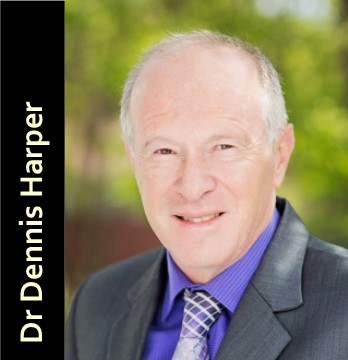 |
Title: PEMF Therapy for Cancer and Pain
Objectives:
- PEMF with cancer patients
- Connections with brain and body with cancer
- Talking with cancer patients on consideration of alternative care
|
| Synopsis: The bases of this presentation will cover the use of pulsed magnetic frequency and the cellular reaction to cancer. We will also approach the utilization of meridians with the brain and body using magnetic treatments. There will be some references to some of the work by Dr. Hammer. We will do some introduction to the biochemical effects on neural pathways and cellular function by using a combination of pulsed magnetic frequency and nutritional supplementation. The conclusion will discuss approaches to the patient concerning alternative treatments and how that fits into the cancer treatment program. |
| |
 |
Title: Richard Davis, MD
Objectives:
- Understand the importance of early detection
- Understand the utility of companion testing
- Learn how to incorporate these tests into everyday practice
|
| Synopsis: Two new quantitative ELISA tests (Nagalase and ENOX2) are now available in the United States. Using serial assays, clinicians can follow the trends of these test results in their cancer patients to monitor the effectiveness of the current therapeutic protocol and make more accurate midcourse corrections to improve clinical outcomes. |
| |
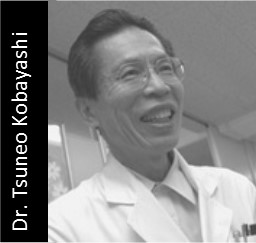 |
Title: Cancer risk assessment by utilizing tumor marker combination assay according to the natural history of cancer
Objectives:
- I have carried out primary cancer prevention program among 21000 residents.
- I have carried out cancer recurrence prevention program among 4000 advanced cancer patients.
- About 30 patients are cancer survivors for 30 years after treatment finished from advanced cancer patients who are given up from large hospitals.
|
| Synopsis: We have carried out 3 type of tumor marker (specific tumor marker, associated tumor marker and growth related tumor marker) combination assay (TMCA)( Cancer 1994). We have carried out TMCA as for Mayo clinic serum samples (307) with double blind method. Sensitivity is 87.5% but low (30-76%) specificity. So after exploiting of complex tumor marker, multivariate analysis formula and serum fractionation by biochemical biopsy, we have re-examined these serum panels. The results is as follows: sensitivity; 80-90%, specificity; 84-85%, accuracy; 83-88%, respectively. |
| |
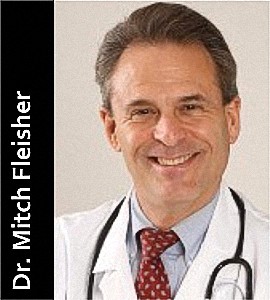 |
Title: Homeopathic and Nutritional Management of Advanced Cancer: A Cured Case of Terminal, Metastatic, Small Cell Cervical Carcinoma
Objectives:
- Review the allopathic, conventional treatment of cancer and its consequences
- Review the homeopathic medical therapy of cancer and its benefits
- Review the nutritional therapy of cancer and its benefits
|
| |
| Synopsis: This is a case of a 53 year old, Caucasian female with terminal, metastatic, small cell cervical carcinoma, anxiety, depression, acne rosacea, anemia, sinusitis, and recurrent UTIs. Herein is illustrated the effective, and successful integration of Homeopathic and Nutritional Medical Therapy for a complicated, advanced case of cancer. |
| |
| |